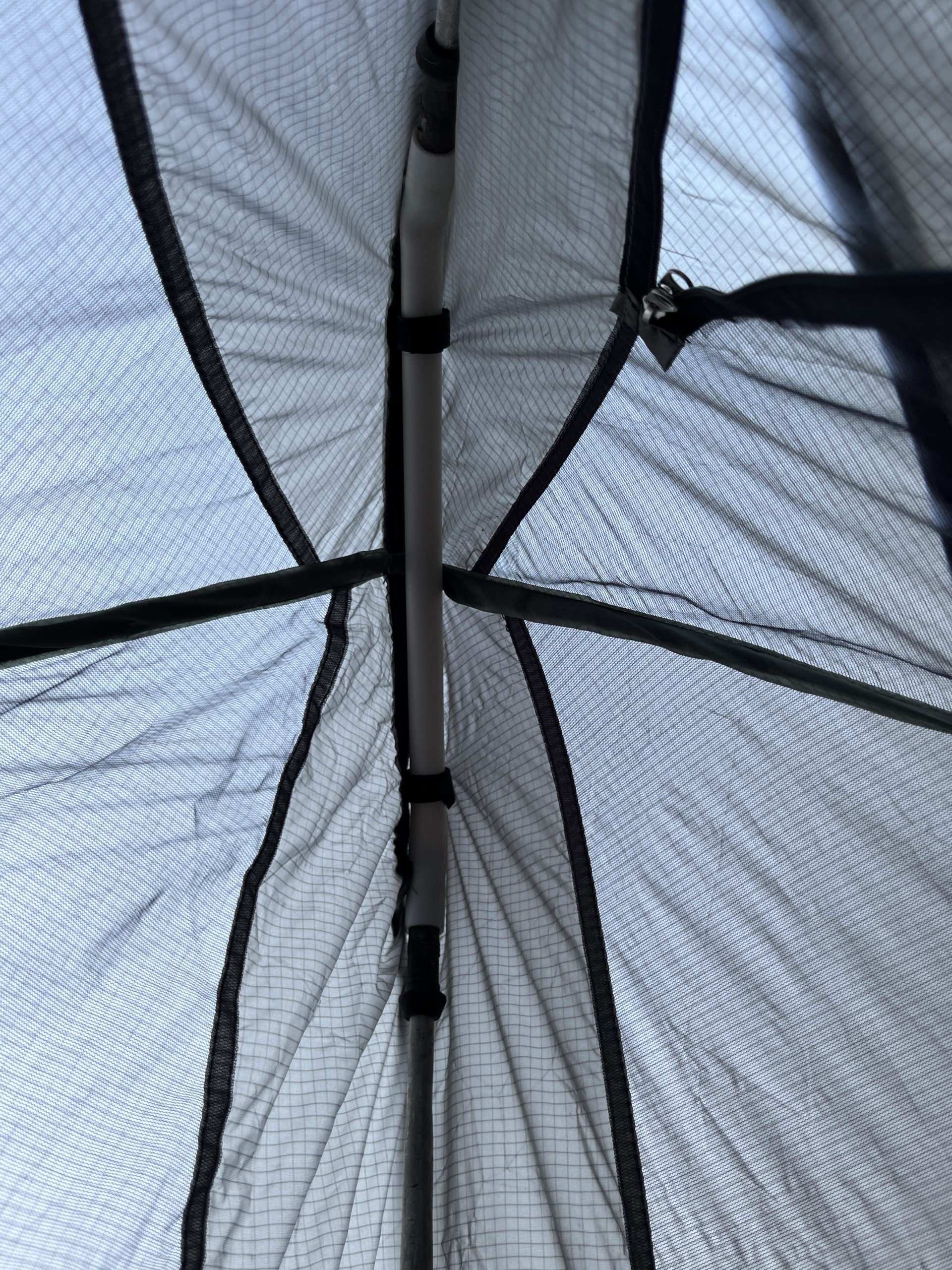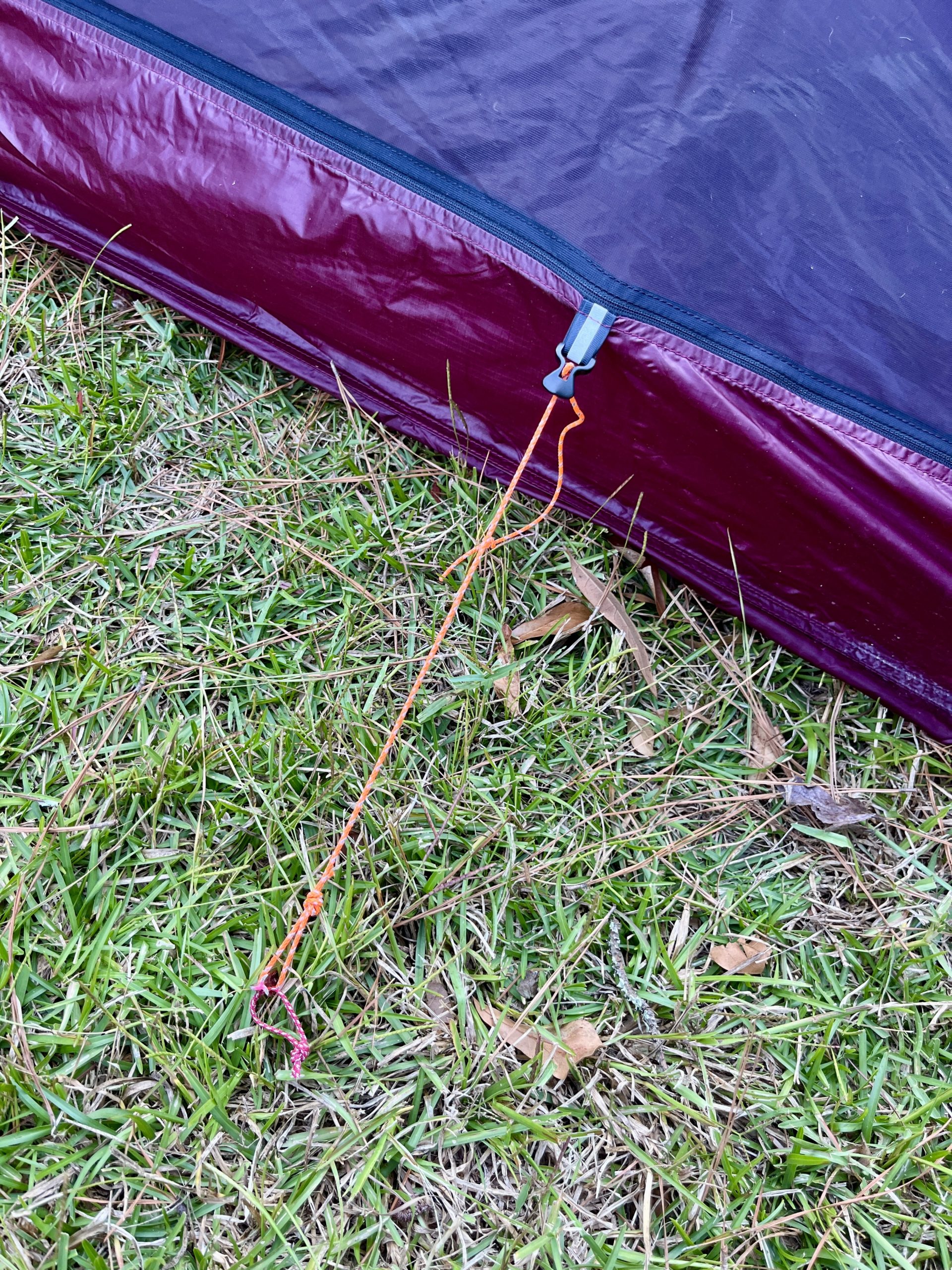LightHeart Gear Solo Sil-Nylon Tent Review
The search for the perfect lightweight solo long-distance hiking shelter is, it seems, neverending. It’s tricky to strike a balance between weight, durability, ease of assembly (I have seen some seriously Rube Goldberg setups out there), and protection from the elements.
In all honesty, despite its status as a “heavier” freestanding tent (if we really think two pounds, six ounces is “heavy”), I never stopped loving my good ol’ REI Quarter Dome 1 until I finally had to retire it in 2021 after it kind of crumbled on the Pacific Crest Trail after seven years.
On the other hand, I really like the reduced weight of the Six Moon Designs Skyscape Trekker (review here), and were it not for frustration over condensation, would have used that shelter for the entire PCT last year.
Now comes North Carolina manufacturer LightHeart Gear’s Solo Sil-Nylon tent, which is similar in design to the Skyscape Trekker. I got a chance to use the tent on a recent short sojourn on the Virginia Appalachian Trail. It’s a great tent with lots of upsides, even if I’m still not super-skilled at getting the tightest pitch.
LightHeart Gear Solo Sil-Nylon Tent At-a-Glance
MSRP: $260
Weight: 27 oz (one pound, 11 ounces)
Category: Non-freestanding, single-piece double-wall
Peak Height: 43 inches
Interior Space: 30 square feet floor; 133 x 65 inches
Circumstances of Use
Used several nights on the Virginia Appalachian Trail in fall temperatures dropping to about 30 degrees.

Early morning sun breaks through the clouds on the Appalachian Trail near Pearisburg, Virginia in October. Clay Bonnyman Evans photo.
Assembly
If you haven’t set up a trekking pole tent before, it can take a little bit of practice. This reviewer didn’t get a good, tight pitch until the third attempt.
The company provides a diamond-shaped footprint made from a tough polyethylene.
Stake down four points of the diamond-shaped floor on top of the footprint, leaving some slack for pole extension. After extending trekking poles to 120-125 cm, crawl inside with one pole on either side of you and the ridge pole close at hand.
LightHeart describes two methods for the next steps: you can either insert a pole tip in one end of the ridge pole and then Velcro the pole to the ceiling, or attach the ridge pole first and insert your pole tips. The instructions suggest inserting one pole tip first to reduce the chance of poking a hole in the tightened fabric. I tried it both ways and didn’t find one better than the other.
Either way, you want to end up with both trekking poles extended to at least 130 cm, with tips inserted in either side of the ridge pole and handles snugged into the reinforced floor corners. At this point, you can remove the stakes on the side floor and use them to stake out the rain fly or leave them in place and use two more for the fly.
You should then be able to tighten the tent using the adjustable fly lines. If you wish, you can use up to four additional stakes to “stand up” the bathtub floor.
I struggled a bit to get a tight pitch on the Solo. It’s important to stake the floor correctly to avoid sagging on either side. And I failed to lengthen the poles enough my first couple of pitches, slightly incredulous that they needed to be extended so far (they do).
Materials and Features
North Carolina manufacturer LightHeart Gear’s Solo Sil-Nylon tent is remarkably roomy for a lightweight shelter, offering a prodigious amount of square footage and headspace at less than two pounds. Designed for three-season use, it’s about as roomy as you’re likely to find in a single-person tent.
Built from imported 30D ripstop nylon and coated on both sides with silicone, the Solo is a slick little shelter in more ways than one (see below).
Though the tent is a single piece, the company describes it as “fully double-walled,” relying on a design that uses two trekking poles—or two separately sold segmented tent poles—and a 13-inch, lightweight plastic “ridge pole.” There is a single, large side-entry door with a two-way zipper and a small interior pocket. The fly forms a small vestibule, and LightHeart says it “comes down to 3 inches off the ground.”

Though it takes a bit of practice, once you get the hang of it, you can get a fairly tight pitch on the Solo. Clay Bonnyman Evans photo.
The Solo can be pitched with as few as four stakes, but an eight-inch bathtub floor can be fully extended by using an additional four stakes.
The tent comes with a 14.5 x 5.5 stuff sack and includes the ridge pole. Collapsible tent poles and stakes are sold separately.
(With a separately purchased pole, you can also create an awning on the off-side of the tent for better air flow and potential reduction of condensation, but this reviewer did not use that feature.)
Space, Weight, Packability
As mentioned above, the Solo is generous in both floor and head space. The floor is a whopping—and possibly excessive—133 inches (just over 11 feet) long and nearly five-and-a-half feet wide. Proper setup requires trekking pole extension to 130 or more centimeters, which provides 43 inches (more than three-and-a-half feet) of headroom.
The Solo is, ahem, a solo tent. But it’s one of those solo tents that has plenty of room to explode your pack inside, and honestly, it’s not out of the question that you could nestle a couple of packs and people in if necessary.

The Solo packs down to 15x5x6 inches, including a stake bag with 6 MSR Ground Hog Mini stakes and ridge bar. Clay Bonnyman Evans photo.
At just 27 ounces, the Solo is a good deal lighter than most free-standing or two-piece double-wall tents. The weight is in the ballpark for similar lightweight trekking pole shelters. It packs relatively easily into a modest bundle (about 15 x 5 x 6 inches), with plenty of room for the ridge bar and a stake bag.
Protection
This reviewer used the LightHeart Gear Solo on the Appalachian Trail in Virginia at around 4,000 feet elevation in early October, with temperatures dropping to below freezing at night.
The Solo tested had been seam-sealed by the manufacturer, but you can also choose to do it yourself. It was challenged only by light, brief rain one night but performed admirably. There was considerable condensation on the fly each chilly morning, and until I got a really good pitch, some of that moisture managed to infiltrate the mesh interior walls, leaving my gear slightly damp.
The tent does feature two guyouts to help reduce the likelihood of experiencing that problem, if you choose to use them.
I experienced substantial wind one night, perhaps 25 mph, and detected nary a wobble in the Solo. Once it’s pitched reasonably well, it’s extremely solid.
Durability
With only light use so far, I can’t speak to the long-term durability of the Solo or its fabric. The ripstop exterior walls and floor seem plenty tough, while the mesh interior walls are no doubt a little more delicate.

There’s a huge amount of room in LightHeart Gear’s Solo tent. It’s 11 feet long and nearly five-and-a-half-feet wide inside, with an interior height of almost three-and-a-half feet. Clay Bonnyman Evans photo.
LightHeart Gear Solo Sil-Nylon Tent Pros
- Very lightweight
- Extremely roomy
- Relatively compact when packed
- Reasonably priced
- Lots of options for assembly
LightHeart Gear Solo Sil-Nylon Tent Cons
- A little bit difficult to get a tight pitch
- Silicone-treated material is extremely slippery. You might need to paint strips of seam sealer on the tent floor to keep your pad from sliding around.
- Requires nearly full extension of trekking poles for assembly
- Separate ridge pole potentially easy to lose or misplace
Overall
LightHeart Gear’s Solo Sil-Nylon tent is very light and looks plenty durable. It’s very roomy indeed for a single-occupancy tent.
For my tastes, I could sacrifice a bit of headroom or floor space in exchange for something less than maximum (or near-maximum) trekking pole extension. I did, on the third or fourth try, get a pretty tight pitch, but it wasn’t easy, and even then, rain and condensation delivered just a tiny bit of sag.
But I chalk that up to inexperience and fully expect that the more I use the Solo—and I will use it as it’s a great tent—the better I’ll get at finessing the pitch.
Shop the LightHeart Gear Solo Sil-Nylon Tent
Comparable One-Person Backpacking Tents
MSRP: $299.25
Weight: 22.9 ounces
Livable Space: 19.5 square feet
MSRP: $549
Weight: 15.3 ounces
Livable Space: 21 square feet
Six Moon Designs Skyscape Trekker
MSRP: $270
Weight: 28 ounces
Livable Space: 23 square feet
The Lightheart Gear Solo Sil-Nylon tent was donated for purpose of review.
This website contains affiliate links, which means The Trek may receive a percentage of any product or service you purchase using the links in the articles or advertisements. The buyer pays the same price as they would otherwise, and your purchase helps to support The Trek's ongoing goal to serve you quality backpacking advice and information. Thanks for your support!
To learn more, please visit the About This Site page.

 ">
">






